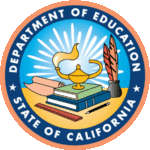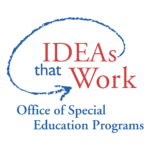The article surveys existing research on disproportionality and outlines three common perspectives used to explain the issue. It is useful for practitioners because it shows how experts have tried to understand factors associated with disproportionality.
Waitoller, F. R., Artiles, A. J., and Cheney, D. "The Miners’ canary: A Review of Overrepresentation Research and Explanations." Journal of Special Education, 44(1), 2010:29-49
The tool from the National Center for Culturally Responsive Education Systems Training (NNCREST) provides an overview of how RtI can be understood and used with diverse learners. It is useful for practitioners because it offers insight into how RtI can extend beyond a policy prescription in order to truly be responsive to all learners.
Esparza Brown, J., and Doolittle, J. A Cultural, Linguistic, and Ecological Framework for Response to Intervention with English Language Learners. Washington, DC: Office of Special Education Programs, U.S. Department of Education, 2008.
Addresses the disproportionate representation of culturally and linguistically diverse students in special education and outlines the theoretical assumptions and principles that should guide efforts to reduce the disproportionate representation of these students in special education.
Janette K. Klingner et al. (2005) Education Policy Analysis Archives.
The article provides a conceptual map for understanding how policy, practice and people intersect in schools. The article is useful for practitioners that want to understand how federal mandates, school practices and the multitude of individuals in schools can coalesce into a system that improves general and special education.
Klingner, J. K., Artiles, A. and others. “Addressing the Disproportionate Representation of Culturally and Linguistically Diverse Students in Special Education through Culturally Responsive Educational Systems.” Education Policy Analysis Archives, 13(38), 2005: 1-41.
Integrating brain science, culture, and learning, Hammond provides information on using information processing to improve capacity for learning.
Hammond, Zaretta. 2015. Culturally Responsive Teaching & the Brain: Promoting Authentic Engagement and Rigor Among Culturally and Linguistically Diverse Students. Thousand Oaks, CA: Corwin.
An overview of the history and scope of the problem of disproportional representation.
Martha Coutinho and Donald Oswald (2006) National Center for Culturally Responsive Educational Systems.
Published on August 28, 2013
Distinguishing Linguistic and Cultural Differences From Disability Presented by Alba A. Ortiz, Ph.D. This webinar is presented via the State Performance Plan Technical Assistance Project (SPPTAP) and the Napa County Office of Education with funding from the California Department of Education.
Ortiz, Alba. 2013. Distinguishing Linguistic and Cultural Differences From Disability. State Performance Plan Technical Assistance Project.
One of America's top ten educators, Linda Darling-Hammond uses this text to provide educators with a pathway to prepare students to meet the demands of a diverse and complex world.
Darling-Hammond, Linda, and Oakes, Jeannie. 2019. Preparing Teachers for Deeper Learning. Palo Alto, CA: Learning Policy Institute.
Darling-Hammond, Linda, and Oakes, Jeannie. 2019. Preparing Teachers for Deeper Learning. Palo Alto, CA: Learning Policy Institute.
Practitioner brief written for parents and teachers of culturally and linguistically diverse (CLD) students; discusses culturally and linguistically responsive prereferral interventions for preventing the disproportionate representation of CLD students in special education.
Shernaz B. García and Alba A. Ortiz (2006) The Equity Alliance at Arizona State University.


